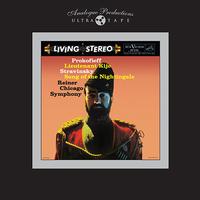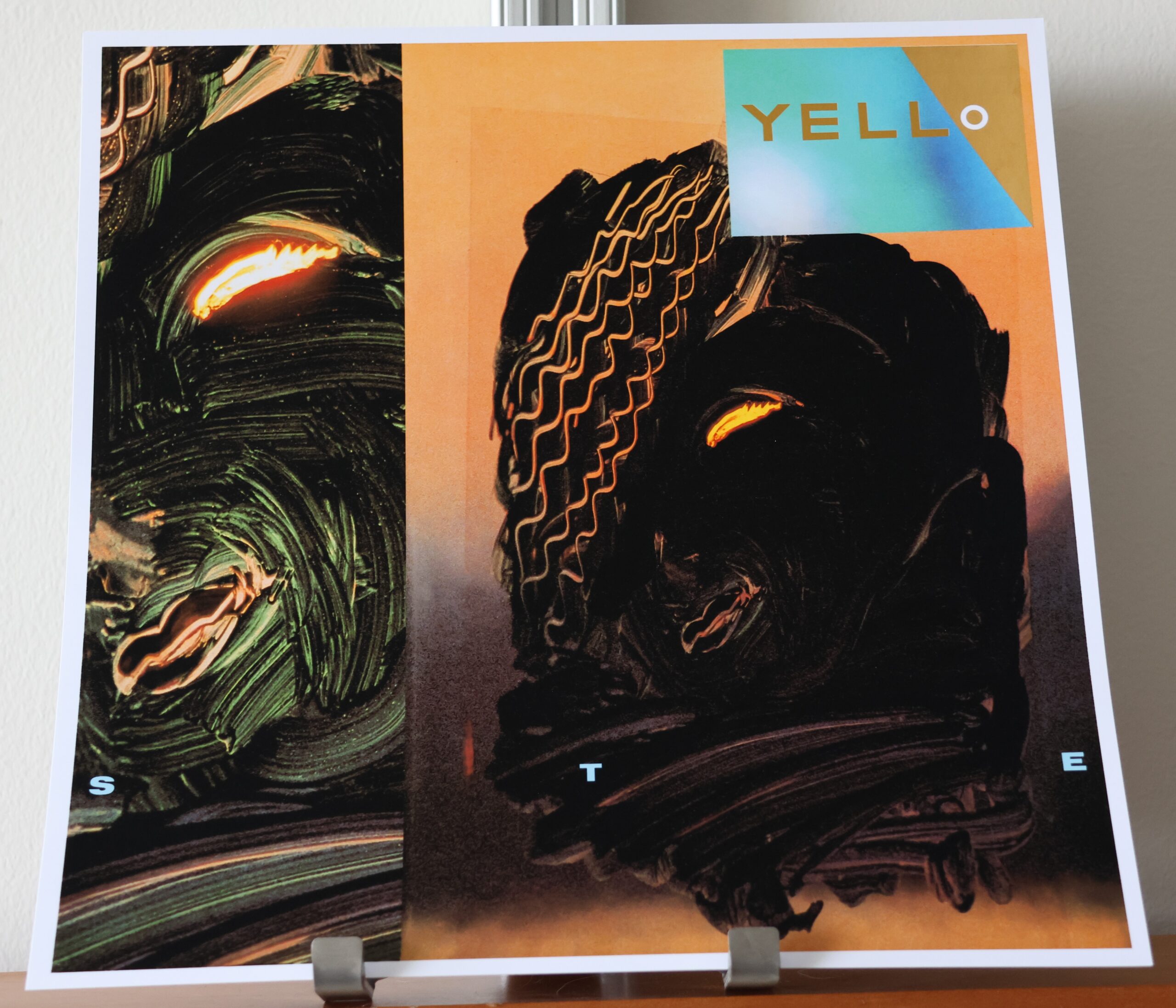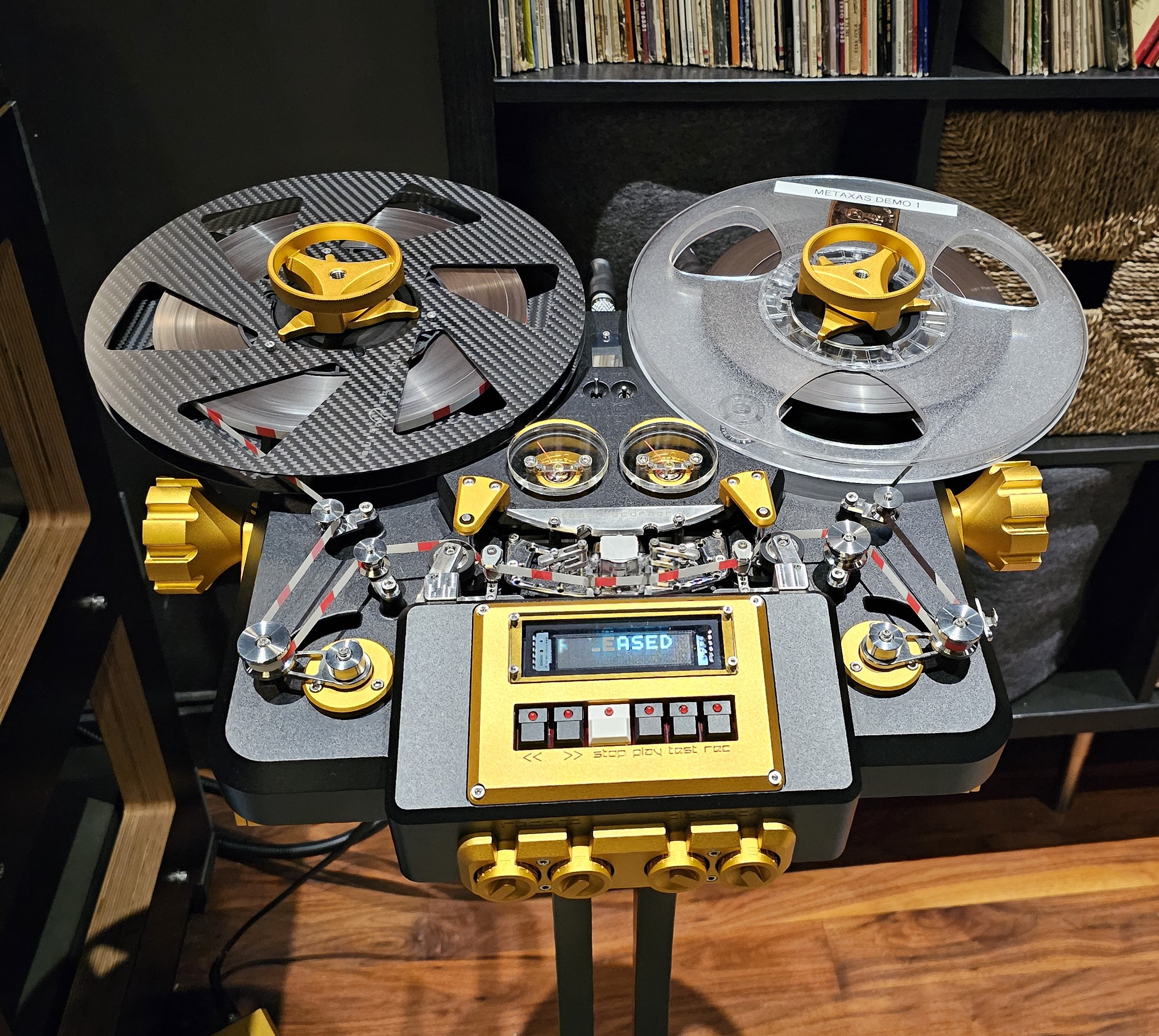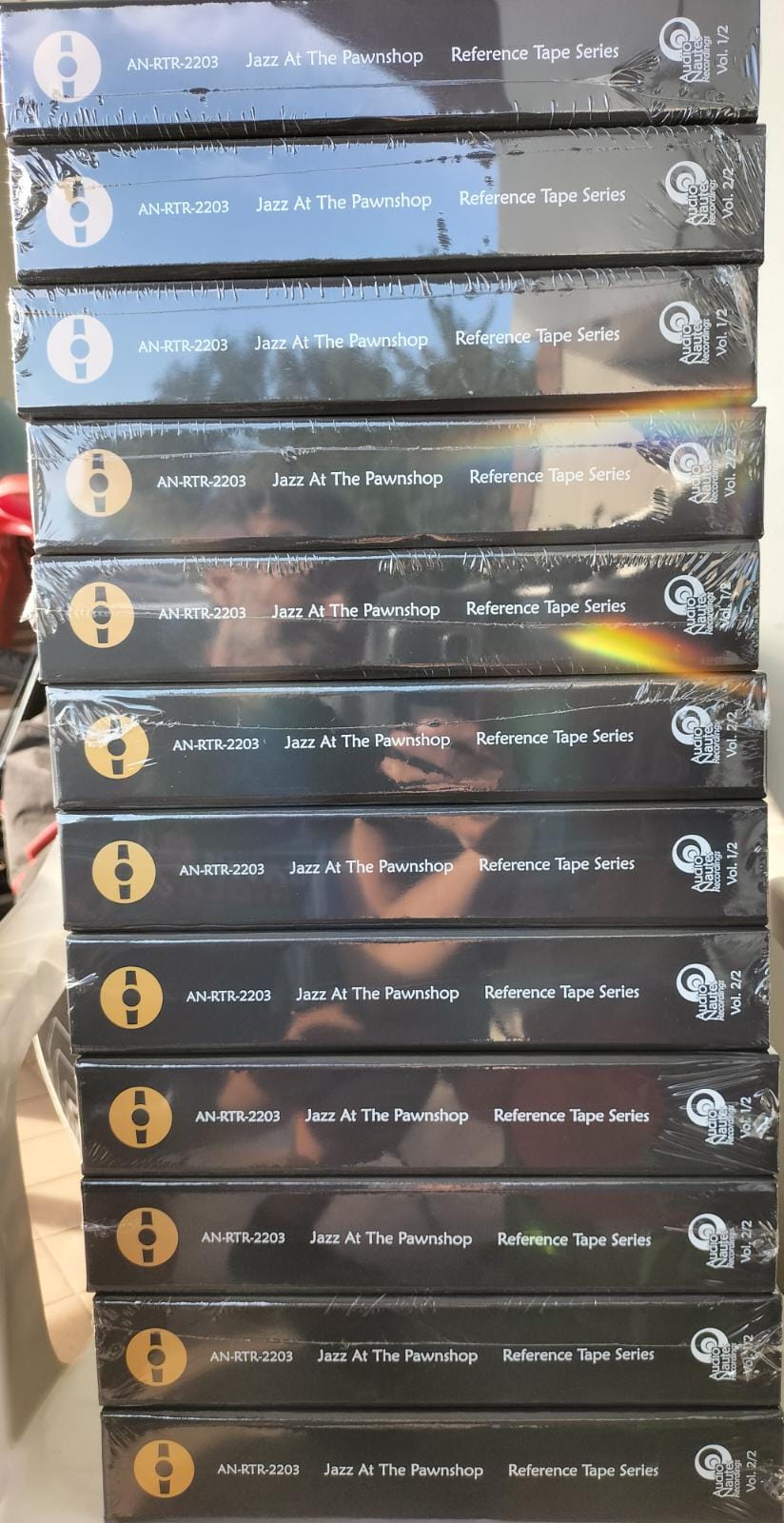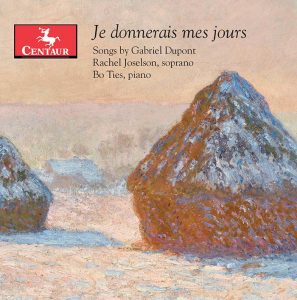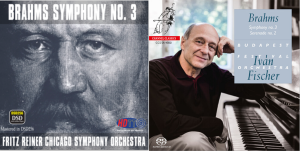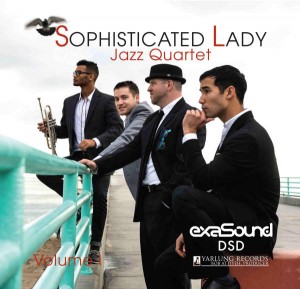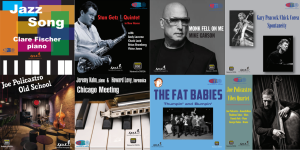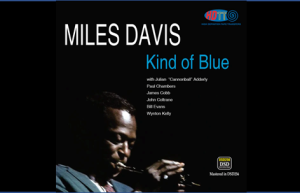Prokofiev: Lt. Kije (recorded in 1957); Stravinsky: Song of the Nightingale (recorded in 1956), Fritz Reiner (conductor), Chicago Symphony Orchestra. Producer: Richard Mohr; Engineer: Lewis Layton. Acoustic Sounds/RCA Living Stereo Ultra Tape, 15-ips, 2-track, reel-to-reel tape, LSC 2150. Price: $450.
Fritz Reiner and the Chicago Symphony Orchestra's performance of Prokofiev's Lt. Kije paired with Stravinsky's The Song of the Nightingale is not only Acoustic Sounds' best Ultra Tape Series 1 reissue but the finest sounding of the new generation of 15-ips reel-to-reel tapes! Bar none. This 60+ year old stereo recording has it all! Sonics. Performance. History.
Indeed. Two of the giants of 20th century classical music. In fact, both composers were friends and "Stravinsky described Prokofiev as one of the greatest Russian composers of his day, after himself." (HERE) An interesting and ironical pairing of pieces. One piece originally written as a film score, the other as an opera with both rearranged for orchestra. Two similar themes. Reel A about a fake army soldier and Reel B about a fake mechanical nightingale. Two world leaders. The first reel about the Czar of Russian and the second reel about the Emperor of China.
Reel A with Lt. Kije (1934) marked Prokofiev's first stab at composing a film score. (his most famous being the music for Serge Eisenstein's Alexander Nevsky circa 1938.) Prokofiev later adapted the film score for orchestra suite and Lt. Kije proved to be his best known and most popular classical piece. Milton Cross (Milton Cross and David Ewen: New Encyclopedia of the Greatest Composers and Their Music, Doubleday and Co, 1969), described Lt. Kije as a, "Satire on Czarist stupidity and military bureaucracy. Nicholas I misreads a military report and concocts a fictitious officer named Kije and his aides, dreading to inform their ruler that he has made a mistake, have to continue the existence of Kije, make of a him a hero and then kill him off for good."
Reel B contains Stravinsky's The Song of the Nightingale. Though from the composer's enfant terrible period, the orchestration of The Song of the Nightingale's reflects the influence of Stravinsky's mentor Rimsky-Korsakoff. The Song of the Nightingale began life as the Hans Christian Anderson fairy tale based opera Le Rossignol. The Song of the Nightingale is perhaps best remembered as coming on the heels of Stravinsky's controversial Rite of Spring that Milton Cross wrote "shook the world of music to its foundation." Adapted to a symphonic tone poem in 1917 and derived largely from second and third movements of Le Rossignol, The Song of the Nightingale didn't see its debut by Ernest Ansermet and his new Orchestra de la Suisse Romande in Geneva until after WWI.
The story in a nutshell. The setting is the palace of the Emperor of China who sits teary eyed listening to the Nightingale sing. Then the visiting Emperor of Japan brings a mechanical nightingale and the real bird flies out the palace window. The mechanical bird refuses to sing and the heartbroken Emperor lies on the verge of death. Finally, the real nightingale returns to work its magic and bring the emperor back from the brink of death.
Prokofiev's The Song of the Nightingale also comes an anecdotal and documented story. Anecdotal tale to start. Sid Marks recalled in one of the old Chicago Symphony newsletters that Stravinsky—known for never being pleased with anyone else's performance of his pieces—declared that he couldn't have performed [The Song of the Nightingale] it better than Reiner. What is known is that, "Stravinsky called the Chicago Symphony Orchestra under Reiner the most precise and flexible in the world." (John L. Holmes: Conductors on Record, St. Edmunsburg Press, 1982).
RCA's recordings of Fritz Reiner and Chicago Symphony Orchestra were unquestionably the company's crown jewels and part of the company's inaugural set of stereo tape releases in 1954; Lt. Kije, in turn, was one of RCA's first stereo LP releases in early 1958. (Stereo LPs didn't appear on record store shelves until late 1957.) This early RCA stereo recording was originally released on either LP (LSC 2150) or two 7-1/2 ips, 2-track tapes (Lt. Kije: BCS-96/Song of the Nightingale: CCS-97). The original RCA Shaded Dog LP of Prokofiev's Lt. Kije/Stravinsky's The Song of the Nightingale (RCA LSC 2150) came in at number six on Sid Marks' "Best of RCA Classical Releases" (Ultimate Audio, pgs. 72-76, Winter 2000). Sid's summary of the recording read, "From tonal qualities to dynamics, staging and ambience, this beauty has always been among the brightest stars in the RCA analog heaven." How much better might this recording fared if Sid heard the new 15-ips tape? The mind boggles.
More interestingly, however, is that this early RCA recording sounds very different than the previously reviewed 15-ips, 2-track RCA recordings of Reiner and the Chicago Symphony Orchestra doing Scheherazade and The Pines of Rome. Crescendos on the Lt. Kije tape aren't as compressed and nasty. Strings are smoother. A more linear sounding and less overloaded bass. All of which got me to thinking about what was going on and responsible for these not so subtle differences? Sonic differences directly traceable to different miking techniques or halls can probably be eliminated here. Lewis Layton as a rule found the optimal onstage mike positions at Chicago Orchestra Hall and stuck with them. Then I remembered this early RCA Stereo Living Stereo release was recorded on RCA's newly acquired Ampex 300-3 3-track machine using NAB equalization curve. Scheherazade and The Pines of Rome (and many others for a period of about two years it appears), on the other hand, were laid down using Ampex's newly developed Master Equalization (AME) curve. (from what I can understand, many labels back then switched to AME for a short period of time.) AME, an early and primitive noise reduction attempt, also inserted another box in the signal path on top of the NAB equalization. Could the sonic difference among these recordings be traceable to the different equalization curves? I ran this idea past several renowned remastering engineers including Ryan Smith, Kevin Gray and Steve Hoffman as well as the person in charge off the tape duping Gus Skinas (unfortunately no one remains from the RCA days to check with). They found it an interesting idea and couldn't offer another suggestion as to why to tapes sounded so different. Other than AME was a complete disaster.
Now for the recording. Fasten your seat belts as Reiner and the Chicago Symphony take you on a roller coaster ride on Lt. Kije that includes crystal clear string sound plus dynamics that are simply off the charts. In fact, as mentioned in this years' Positive Feedback 2017 Product of the Year Awards (HERE), play Lt. Kije the first time around at a lower than normal volume level. Power—unless running some really efficient speakers—goes a long way toward recreating both the recording's ease, dynamics and dynamic contrasts. Each of the five movements beginning with the "Birth of Kije" and its legendary offstage cornet introduction (imaginary soldier) to the third movement "Kije's Wedding" with its celebratory feel and power of the brass and woodwinds to the last movement "The Burial of Kije" with the return of opening cornet are sonic blockbusters.
It's a wild ride, too, from the frenzied opening of the single movement The Song of the Nightingale with solo violin, harp, piano and celeste (real nightingale) and piccolo, flute and oboe (mechanical bird) to the somber tone of the violin and cellos when the emperor is dying to the finale with replete with harp glissando. One area where the tape truly stands with both pieces lies in its ability to reveal subtleties during louder passages. Not to mention the tone in the lower registers of reed instruments. The attack and decay of individual instruments and mood swings on a dime. The strike and ringing of triangles unlike you'll ever hear on LP. Plus the recording's crystalline-like transparency allows more of the sense of Chicago Symphony Hall to emerge. Maybe there's a hair of congestion on peaks and a little bit missing in the lowest octave (as seems to be true for all Living Stereo recordings) but these deficiencies never detract from this absolutely phenomenal sounding recording. If only Mssrs. Mohr and Layton were still around to hear what they produced in all its glory!
What about newest Acoustic Sounds LP vs. tape reissue? Once again, the same old audiophile Murphy's Law rears its head. The LP sounds terrific until you hear the tape. There's just a little more of everything on the tape starting with the very opening notes to the solidity of instruments to the sound of strings during the first movement of Lt. Kije. Everything that's important to bring the listener back in time to the original recording. That said, the LP reissue is the next best thing to own if you don't have a tape machine. Ryan Smith did a great job of capturing much of the sound of the tape on the Acoustic Sounds vinyl reissue.
There are reel-to-reel tapes and then there are reel-to-reel tapes. And this sixty some year old recording of Reiner and The Chicago Symphony performing Lt. Kije and The Song of the Nightingale is about as real as you can get. In fact, this Ultra Tape release made me to rethink my reel-to-reel tape rankings and ultimately create a new ultra-exclusive category of tapes called the "Spinsational Six" (HERE) to give this recording its just due. All six tapes that will eventually comprise this category are must-buys and represent the state-of-the-art in both sound and music with Lt. Kije/The Song of the Nightingale being the first tape release to be awarded this honor! Stay tuned to see what other tapes will be enshrined into this exclusive list along with this exalted RCA Living Stereo release!




